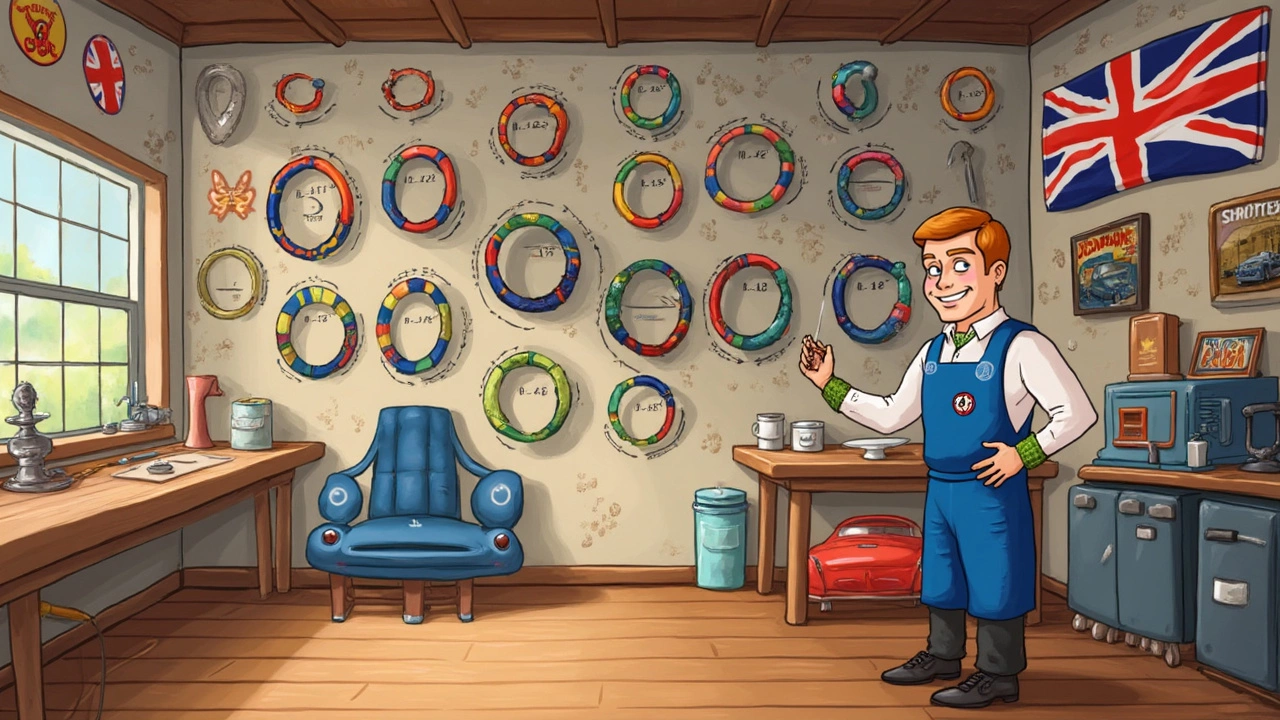Ever tried driving in the rain with worn-out wipers? It's kind of like using a phone with a cracked screen—both annoying and pretty unsafe. If your wipers are leaving streaks or can't handle the rain, it might be time to replace them. But how do you make sure you're buying the right size?
First off, figuring out your wiper size is surprisingly easy but often overlooked. Every car model has a specific wiper size it needs, usually detailed in the owner's manual or easily searchable online. The key is getting this right because the wrong size could leave you with those annoying streaks or, even worse, not fit at all.
One quick tip? Measure the current ones on your car! Take a tape measure and check the length of the wipers currently mounted. You'll want to replace them with wipers of the exact same length. Some cars even use different sizes for the driver's and passenger's side, so pay careful attention.
- Why Wiper Size Matters
- How to Measure Your Wipers
- Common Mistakes to Avoid
- Interesting Facts About Wipers
Why Wiper Size Matters
You might wonder if it really makes a difference if you get the exact size when replacing your windscreen wipers. Well, it actually does, big time! Using the proper size ensures that your wipers fit perfectly, hugging your windshield as they were designed to, which is crucial for clear visibility.
First off, let's consider the role of windscreen wipers. They're your front-line defense against rain, snow, dirt, and any other grime that might try to obstruct your vision while driving. If the wiper size is off, it can lead to poor contact with the windshield, making it less effective at keeping your view clear.
Consequences of Using the Wrong Size
Using the wrong size can cause several issues. If they’re too long, the wipers might overlap and get tangled, leading to potential damage to the wiper arm or even the windshield itself. On the other hand, if they're too short, they won’t cover enough surface area, leaving parts of your windshield unprotected from the elements.
Perfect Fit Means Perfect Sweep
A properly fitted wiper ensures a streak-free wipe, optimizing your driving safety. This is especially crucial in heavy rain when even a momentary lapse in visibility can be dangerous. Modern cars often have specifically calibrated wiper sizes to work perfectly with the curvature of the windshield, and even a small deviation can lead to significant performance issues.
Staying Within Specifications
So how do you make sure your new wipers fit? For a start, check your car’s manual or search online for your car model's recommended wiper size. If you can't find it, measuring your existing blades as we discussed before is a reliable way to go. It's not just about style; it’s about safety.
Having the right-sized wipers is a small step towards better driving safety. Don't shrug it off as trivial; it really could make a big difference.
How to Measure Your Wipers
Measuring your windscreen wipers doesn't have to be a daunting task. Whether your wipers are leaving streaks or just need a refresh due to wear and tear, getting the right size is essential for ensuring they work well, especially during a downpour.
Here’s your ultimate guide to getting it right:
Step-by-Step Guide
- Find Your Current Blade Size: Before anything else, check if your vehicle’s manual is available. Most manuals have a section specifying the recommended wiper size. If you've misplaced it, no worries—you can measure the blades yourself.
- Grab a Tape Measure: Extend your tape measure along the length of the current blades. Do this for both the driver's and passenger's side. Some vehicles have different sizes, so measure both!
- Note the Length: Write down the length in inches or millimeters, whichever you're comfortable with. Precision is key here. Most wipers are sized somewhere between 16 and 28 inches.
- Compare with Online Resources: If you're still unsure, many online auto parts retailers have tools or search options that allow you to input your vehicle's make and model to find the correct size.
Why Size Matters
Choosing the right wiper size isn’t just a numbers game. A blade that's too big might overlap and cause damage, while one that's too small may not cover enough of the windshield, leaving patches of rain or dirt that can obscure your vision.
Here's an extra nugget of info for the curious: Did you know that a vehicle's rear window wiper sizes can also differ from the front ones? So, always double-check these sizes too, since they’re often forgotten in the mix.
Quick Tips To Avoid Common Mistakes
- Don't guess or eyeball the size. Always measure or reference accurate sources.
- Avoid mixing and matching different brands, as they might not be compatible with your vehicle's wiper mounts.
- Remember, looking into premium wiper blades with better material might save you from frequent replacements and poor performance.
Once you’ve got the right size pinned down, it’ll be a breeze to replace those old blades and get back to having a clear view, rain or shine.

Common Mistakes to Avoid
When it comes to replacing your windscreen wipers, there are a few pitfalls that car owners can easily stumble into. These aren't big mistakes, but they can seriously mess with your driving visibility if you're not careful. Let's break them down to make sure you're not left squinting through the rain.
Getting the Wrong Size
This might seem a bit obvious, but you'd be surprised how often it happens. People grab wipers off the shelf, thinking they'll fit every car out there. Unfortunately, that's just not true. Each car model has a specific wiper size it requires. So double-check that manual or do a quick online search before buying. Using the wrong size can mean poor contact with the windshield or, worse, throwing them completely off during a storm.
Not Replacing Both Wipers
Some folks think they can just replace one wiper when it starts streaking instead of the pair. Bad idea. Over time, both wipers wear out almost equally, so replacing one will leave you with an imbalance, potentially causing one to leave worse streaks than if you'd just switched them both out.
Ignoring the Rear Wiper
If your vehicle has a rear wiper, don’t forget about it! It's easy to assume they're less important, but they need the same TLC as your primary wipers, especially when reversing during bad weather. A little attention here can save you a headache down the line.
Using Universal Adapters Improperly
Many replacement wipers come with universal adapters, which can be a great convenience. However, ensuring you're using the right configuration for your car type is essential. Improper installation can cause poor performance or even damage your wiper arms.
Ignoring Signs of Wear
Wipers should ideally be replaced every 6-12 months, depending on your use and the weather conditions of where you live. Signs like squeaking noises, skipping, or visible cracks on the wiper blade are clear indicators it's time for a replacement. Don't wait until it's too late!
| Wiper Maintenance Checklist |
|---|
| Check size requirements |
| Replace both wipers concurrently |
| Inspect adapters before installation |
| Review for wear signs bi-annually |
Avoiding these simple mistakes can keep your windscreen wipers working perfectly and your visibility crystal clear even in the worst weather.
Interesting Facts About Wipers
Windscreen wipers might seem like a mundane part of your vehicle, but they actually have a pretty interesting history and even some quirky uses. Let’s dive into some of the most intriguing facts about these essential components.
Born from Inspiration
Did you know the idea for the windscreen wiper came from a visit to New York City? In 1903, a woman named Mary Anderson was riding a trolley car and noticed that the driver had difficulty keeping the windshield clear of falling sleet. This observation inspired her to invent the first manual lever wiper, which she patented in 1903. Talk about necessity being the mother of invention!
The Evolution of Wipers
Windscreen wipers have come a long way since Anderson's time. From manual levers to thermostatically controlled, today’s wipers are often made with advanced materials and feature intricate designs for better performance. Some high-tech vehicles even come with rain-sensing wipers that can adjust speed automatically, ensuring optimal visibility without needing you to lift a finger.
Hidden Features
Many don’t realize that modern windscreen wipers are designed to do more than just swipe away rain. They’re built to handle everything from snow to bugs and more. In fact, some cars have heated wiper blades to prevent ice from blocking your view—a winter warrior’s favorite feature!
Fun with Numbers
Ever wondered how often you use your wipers? On average, they're activated for five to six hours annually—but that depends on your location and climate, of course. They swipe several hundred thousand times in their lifespan. That's more than 180,000 swipes a year!
An Unexpected Use
Fun fact: did you know there are competitions where people test the durability and performance of windscreen wipers? It’s a thing. From extreme weather simulations to endurance tests, these competitions put wipers to the test, ensuring brands know how tough their products really are.






